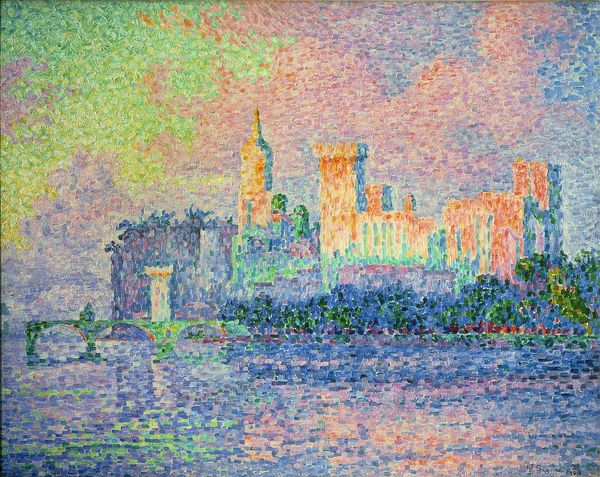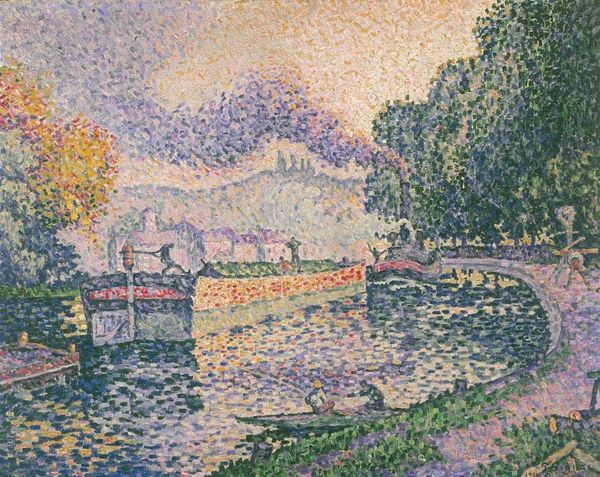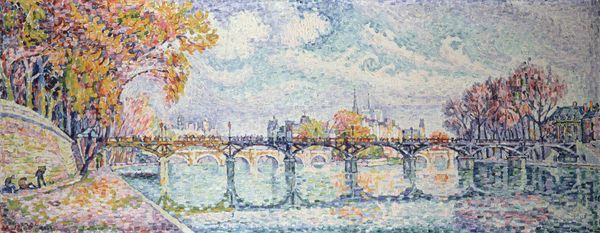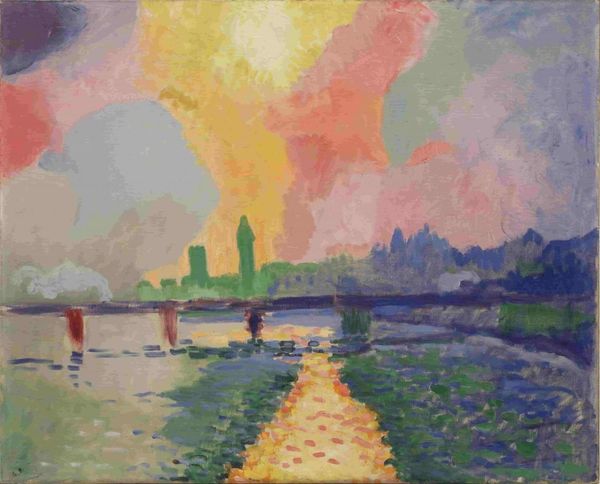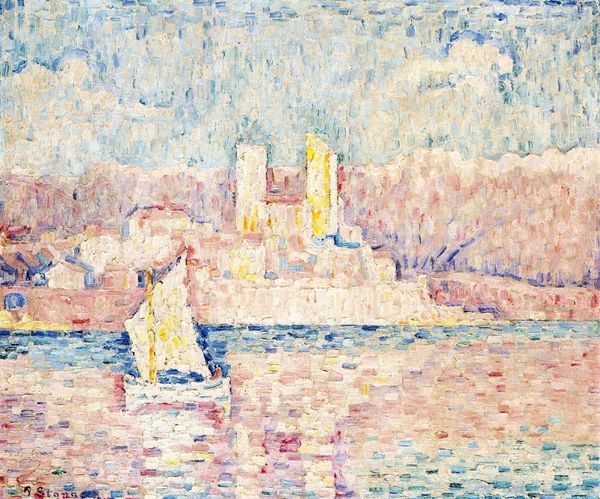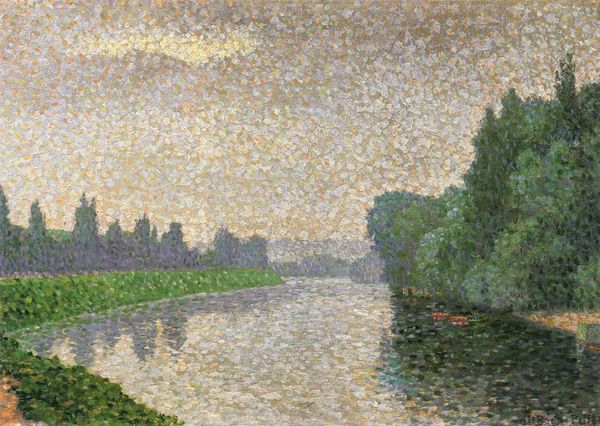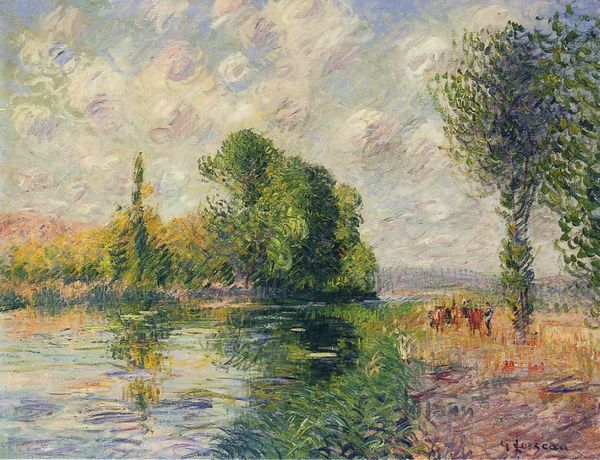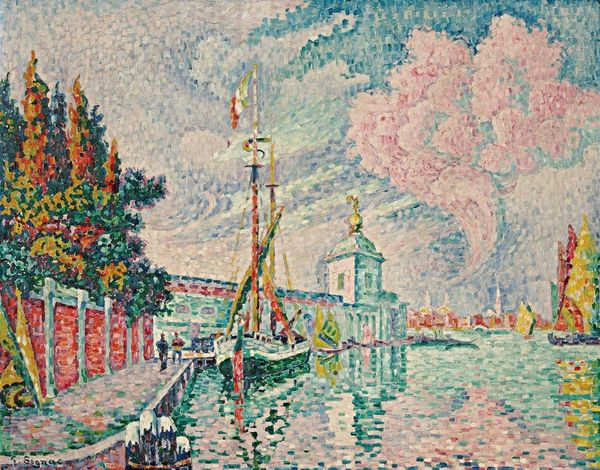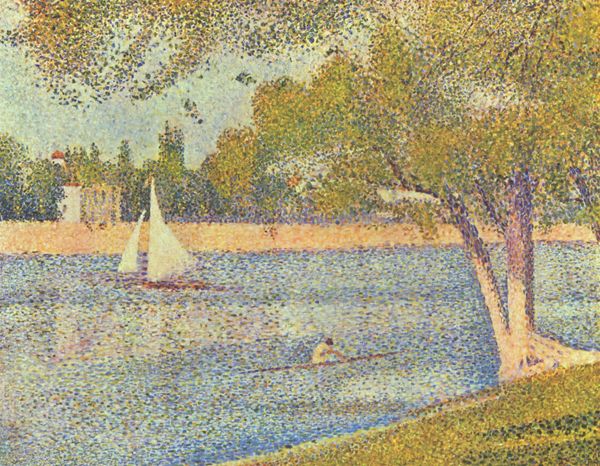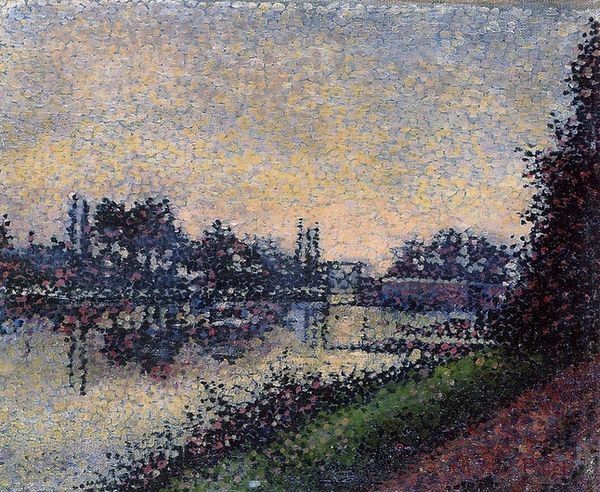
Copyright: Public Domain: Artvee
Editor: So, this is "La Cité, Paris," painted by Paul Signac in 1934, using oil paints. The first thing I notice is the incredibly vibrant use of color – it almost vibrates on the canvas! What are your thoughts on Signac's compositional choices here? Curator: Well, focusing purely on form, observe how Signac employs pointillism not just as a technique but as a structural element. The composition isn’t simply a representation of Paris; instead, the application of discrete dots of color creates a tapestry-like surface, denying any illusion of depth in favor of a flattened picture plane. Editor: I see what you mean. It's less about creating a realistic depiction and more about... color as structure? Curator: Precisely. Consider the distribution of these dots – note how analogous color schemes cluster in certain areas, with yellows dominating Notre Dame to contrasting hues of blues and greens across the river’s surface. It almost evokes a kind of ordered chaos, don’t you think? What feeling do you derive from such ordering? Editor: That’s really interesting. I hadn’t thought about how the choice of color also affects its structure. It almost makes the light itself a tangible thing. How does that influence the viewer? Curator: Think about how this systematic approach to color affects your reading of the image as a whole. Does this deconstruction of light influence our perception of the city of Paris, removing the narrative to highlight an emphasis on artifice and design? Editor: It definitely gives a new perspective. I am seeing things in a totally different way now. Thanks! Curator: My pleasure. Observing Signac’s deliberate emphasis on surface transforms the artwork into something more meaningful than an impressionistic landscape.
Comments
No comments
Be the first to comment and join the conversation on the ultimate creative platform.
